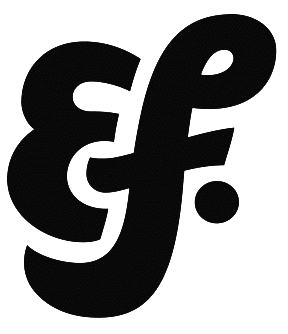Beating Blank Page Syndrome
An old friend of mine from school recently told me that her biggest struggle with hand lettering was that she didn't know how to start. She would sit down in front of a blank page, and feel that awful feeling of resistance.
How on earth could you just create something amazing out of nowhere?
Here's the truth: You can't.
Even the most successful designs often start out as sloppy, unbalanced thumbnail sketches. Once you accept and remember this, the pressure will fade away.
This post is for beginners who don't yet have an established process.
Maybe you've studied some area of design, or looked at beautiful images of lettering. But when you haven't spent years studying letterforms, it's totally normal to have that feeling when you sit down to start. However, you can't let that resistance stop you from making a mark on paper. You have nothing to lose.
Trial and error
I don't believe there is one set methodology or tool that everyone must use. But rather you should find your own process that works for you. The best way to do this is through trial and error — trying various techniques and reflecting back to determine what makes the best results.
Here are a few simple methods that help me get started at the beginning of a project. Summer of Sketching is around the corner, so hopefully you can try these and see what gives you the best results.
Start with writing
I keep a running list on my iPhone of words and phrases that would make great lettering pieces, potential side projects or blog posts. These ideas come to me throughout the week and I make sure to record them. If you don't have such a list, here's how you can generate ideas with writing.
On the blank page, simply start jotting down words in your own handwriting using a pencil or pen. This greatly reduces the pressure because it is much more natural than sketching compositions.
Writing lists of associated words fuels creative ideas.
For example, let's say you are looking forward to the summer time. Just start writing words that come to mind: Warm, sun, outdoors, pool, underwater, play, vacation, beach, beach ball, volleyball, sand, ocean, ice cream, shenanigans... Stream of consciousness.
This will give you have some specific imagery to start drawing from. The real magic happens when you start experimenting and combining these ideas to make something unexpected. Underwater lettering anyone?
This is what a lot of my pocket sketchbooks look like. I don't normally share these rough ideas with anyone.
Carry a pocket sketchbook
A lot of lettering artists prefer to draw on sheets of paper. I also do this, but I strongly recommend every creative person to keep a sketchbook in addition.
Many of your best ideas may come when you are away from the desk. Getting down a rough sketch at the moment it strikes will ensure that your idea doesn't get watered down or forgotten. As a bonus, sketchbooks also keep your recent sketches all in one portable place, in chronological order.
I used to fear drawing in sketchbooks (particularly on the first page) because I wanted it to be perfect. Over time I have learned to use them for working out my ideas as well as refining them.
Create from memory
What was something you saw in the past week that you can't get out of your head? Maybe it's an album cover from your favorite artist, a mural or a piece of signage you saw in your city. Whatever is in your head, get it on to the paper.
I like to use stories from my childhood as inspiration. I guarantee there are so many great things locked up in your memory that can be used as inspiration.
Created in collaboration with my photographer friend Andre Rucker.
Your first idea is never your best idea.
Your goal when you sit down to start sketching a new design should be to draw something awful that doesn't work. (OK, maybe that shouldn't be your actual goal, but you get the point.) Not every single lettering piece you make will be as good or better than the last one, and that's alright!
Stop trying to make it look perfect on the first try. You need to get all of your bad ideas out first. When you get your hand moving and it will become a joyful pursuit instead of a painstaking process.
Key Takeaways
- Great work starts with bad ideas and rough sketches
- Try different methods and see what works best for your own process.
- Write word lists in your own handwriting to reduce the pressure.
- Carry a sketchbook or use your phone to capture ideas as soon as they come.
- You already have tons of inspiration floating around in your memory.
- Not everything you make will be as good as your previous work.
- Once you get your hand moving, it will become a much more joyful experience.
I hope these tips help you get started and realize that you have nothing to lose by filling the blank page with rough ideas. Definitely reach out to me (eric@efdotstudio.com) if you have any feedback, questions, or additional techniques you want to share. I read every email that comes in!



